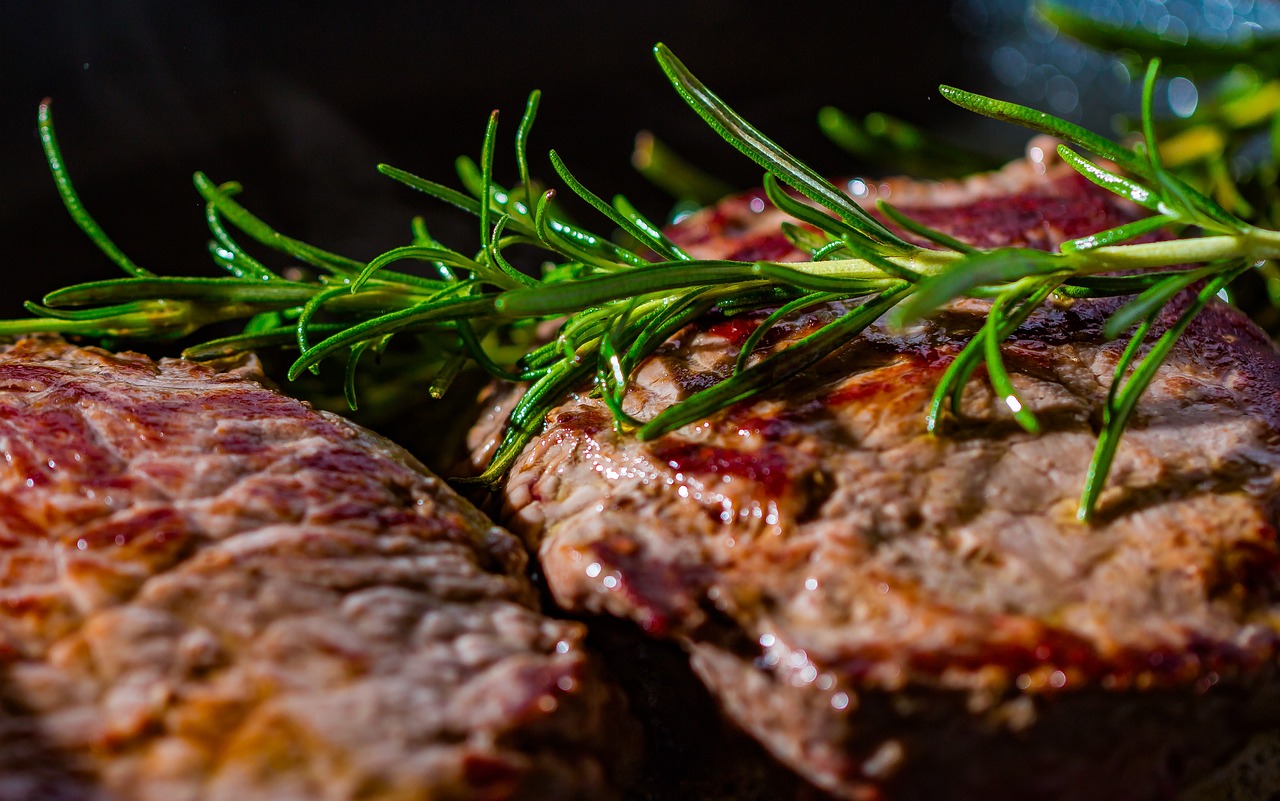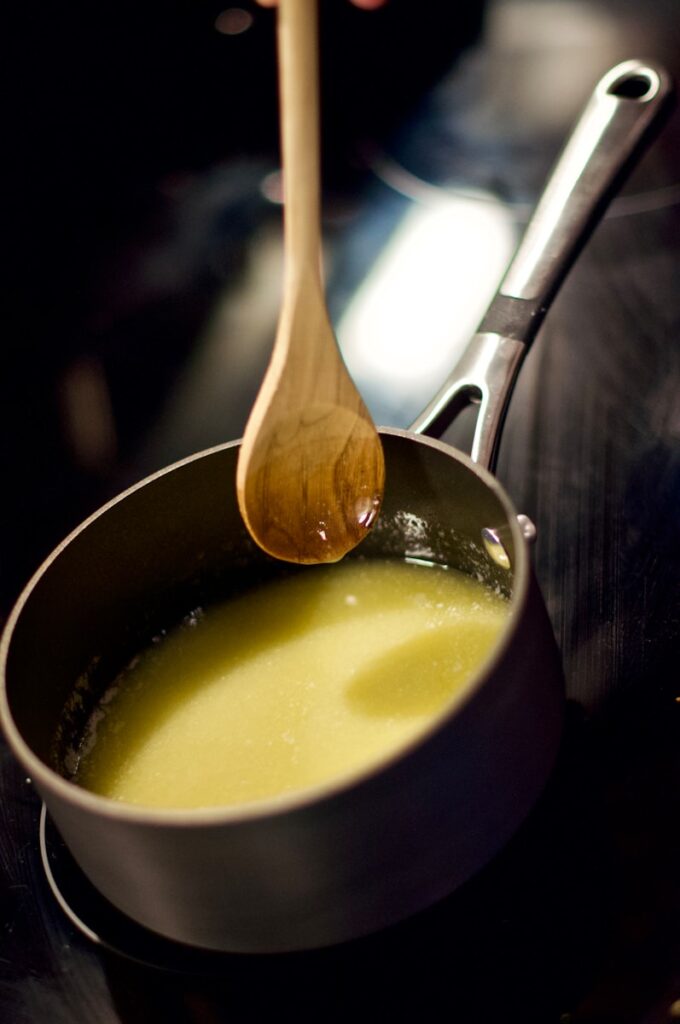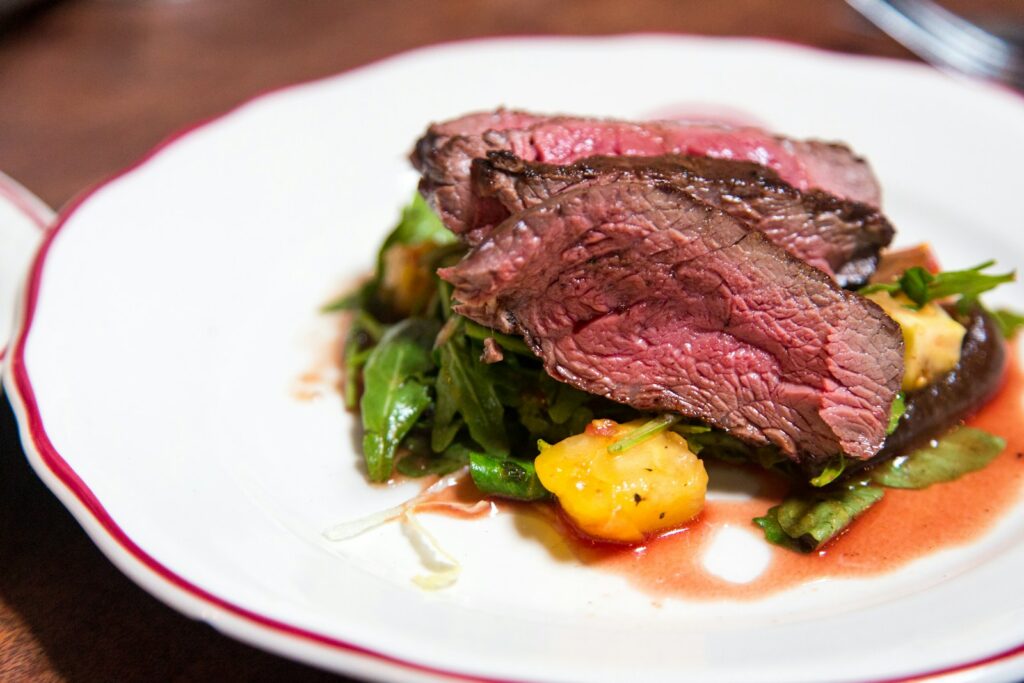The sense of a symphony reaching their brains through the delectable taste of sizzling charbroiled steak combined with golden, crispy frites is something that millions of food fans have experienced across many generations. Actually, what takes a typical dish to new flavor heights is the same legendary Cafe de Paris sauce, a butter-based marvel that has been delighting palates since it was established in the lively core of Geneva, Switzerland. Before delving into the recipe and creating our rendition of the well-known steak frites, let’s examine the history and gastronomic significance of this sauce.
The story of Café de Paris sauce
This story first began in the vivid city of Geneva during the 1930s, in a restaurant carrying the exact name of the sauce. It is in this Café de Paris that this gastronomic treasure was born. Hats off to Arthur-François, alias Freddy Dumont, and his bold innovation. Soon, everyone was talking about the sauce. Before long, it was the crowning glory of the restaurant—a specialty attracting people from far and wide. What’s the secret behind its irresistible attraction? It was rumored that this was the brainchild of Mr. Dumont’s father-in-law, Mr. Boubier—a man whose gastronomic expertise was simply legendary. As the years passed, the distinction of the Bistro de Paris sauce spread past the Swiss lines, arriving at the palates of gourmands across the globe.

What makes this sauce so famous around the world
Both the Bistro de Paris and the Entrecôte eateries monitor their recipes. However, because of the gutsy revealing of Le Monde, we have a brief look into the perplexing embroidery of flavors that make up the Bistro de Paris sauce. Imagine a base of poultry livers imbued with the fragrant quintessence of new thyme and thyme blossoms, mixed with the lavishness of full cream and the tang of white Dijon mustard. This invention is then emulsified with margarine, water, and a sensitive harmony between salt and pepper to make a sauce that is mind-boggling as it seems to be tasty.
The readiness of this sauce is a fine art in itself, an expressive dance of culinary strategies that starts with the cooking of livers and thyme in one dish, while in another, the cream is delicately diminished with mustard and the unobtrusive kind of thyme blossoms. The two are then hitched together, stressed to smooth flawlessness, and stirred into a foamy, brownish joy that, after gathering the intensity of a sizzling entrecôte, breaks down to its regular rich pea-soup-green tint.

The Bistro de Paris spread offers a range of flavors
Past the actual sauce, there’s the Bistro de Paris spread, a compound margarine that, while unmistakable from the exemplary sauce, conveys a similar name and a similarly great exhibit of flavors. This spread is a mosaic of spices, flavors, and sauces, from the intrigue of mustard and the newness of marjoram to the grittiness of rosemary and the anise-like notes of tarragon. Add to that the smoky pleasantness of paprika, the briny kick of tricks, the sharpness of chives, and the umami profundity of anchovies, and you have a spread that is as flexible as it could be delightful. Molded into a chilled log, it anticipates its snapshot of magnificence on a hot steak, liquefying into a sauce that is out-and-out divine.
Let’s talk steak. The classic cut for this dish is an entrecôte, or rib eye, but it needs to be very highly marbled for richness and flavor. If you need leaner steak, then a sirloin will suffice. Whatever the case, choose a big piece that suits your taste and stands out with the powerful flavors of the butter in Café de Paris. First, let your steak come to room temperature before cooking for even cooking and a juicy result.

Onto the fries. These are crispy, golden counterparts to your succulent steak. To make perfect homemade fries, you will want starchy potatoes that ensure you have that crispy outer crust with a soft inside texture, like Russets. Cut into equal batons—remember, the slimmer they are, the crisper they’ll prove to be. Soak in cold water to remove excess starch, then dry thoroughly before frying. A double-fry method—frying once at a lower temperature, where you cook through, and once at a higher temperature to crisp them up—will yield restaurant-quality frites. A recipe for fries would be good to refer to: https://www.allrecipes.com/recipe/50223/homemade-crispy-seasoned-french-fries/
Ingredients needed to make fries
- 2 ½ pounds russet potatoes, peeled
- 1 cup vegetable oil for frying
- 1 cup all-purpose flour
- 1 teaspoon garlic salt
- 1 teaspoon onion salt
- 1 teaspoon paprika
- 1 teaspoon salt
- ½ cup water, or as needed
The Café de Paris is buttery. Knowing, as we do, that the original recipe is a closely guarded secret, there’s no reason not to make an equally amazing version. Begin with the best-quality unsalted butter, softened to room temperature. To this, you will add finely chopped eschalots and garlic, anchovy fillets, lemon juice, Worcestershire sauce, Dijon mustard, curry powder, paprika, kosher salt, tarragon, and parsley. Everything in it together helps create that complex flavor profile that gives Café de Paris butter its magic.

When serving, grill your steak to taste, and season it simply with salt and pepper to show off the flavors of the meat and the butter. While the steak is resting, fry your frites until they are crispy. Serve by placing the steak on a warmed plate, topped with slices of Café de Paris butter so it melts and mingles with the juices of the meat. Add on the side a generous helping of your frites, and voilà—you have a homemade steak frites prepared with Café de Paris, which is just like that, sure to impress.
Creating the perfect Steak Frites at home with your Café de Paris requires embracing the essential elements of French cuisine, which include fresh ingredients, meticulous preparation, and a touch of flavorful vigor. This dish does a terrific job of proving that sometimes the best dinners are made with love and a little margarine, regardless of whether you’re a home cook trying to create something truly amazing or an accomplished gourmet.
Related posts:
Café de Paris sauce
Café de Paris butter – sauce for steak
How to make the Famous L’Entrecote Steak Sauce



